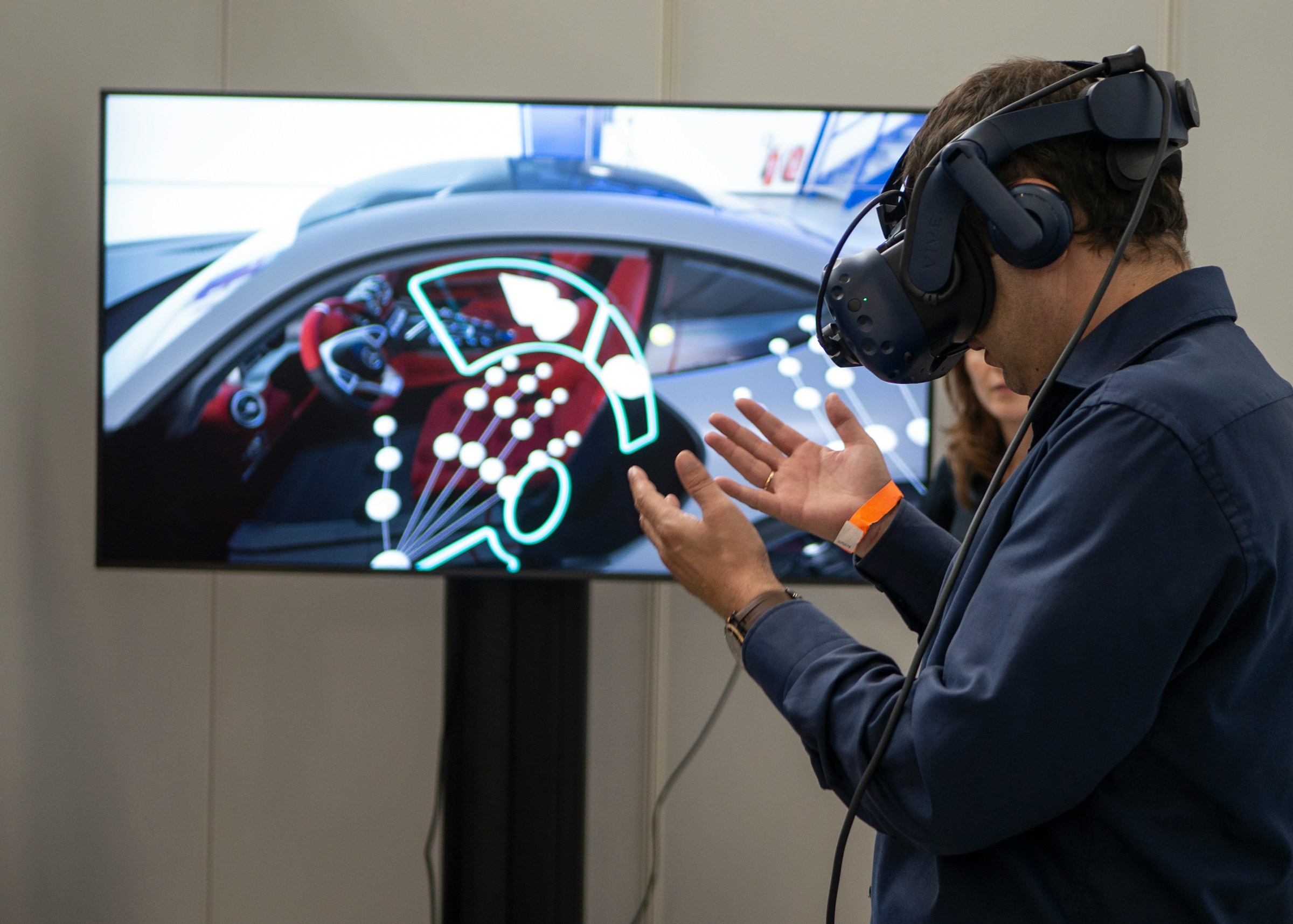The UK real estate market is evolving, driven by technological advancements. Augmented Reality (AR) is reshaping property viewings, offering immersive experiences that engage potential buyers. Imagine touring a property from your living room, visualizing design changes, and exploring every corner seamlessly. This innovative approach not only enhances decision-making but also streamlines the buying process. Embrace the future of real estate as we explore the transformative power of AR in creating virtual property tours that captivate and inform.
Overview of Augmented Reality in Real Estate
Augmented Reality (AR) is revolutionising the UK real estate market by enhancing the property viewing experience. At its core, AR overlays digital information onto the real world, creating an interactive experience that offers potential buyers a more immersive look at properties. This technology is particularly transformative in the UK real estate sector, where virtual tours are becoming increasingly popular.
Also to read : Unlocking Insights: Leveraging Data Analytics for Enhanced Travel Package Optimization by UK Travel Agencies
In the current UK real estate market, buyers face challenges such as limited time for physical viewings and geographical constraints. Here, AR steps in as a solution, allowing prospective buyers to explore homes from anywhere in the world. Through virtual tours, individuals can navigate through properties, examine details up close, and even visualise potential renovations or furnishings. This not only saves time but also provides a more comprehensive understanding of the property layout and features.
Moreover, real estate agents are leveraging AR to make property listings more engaging. By integrating augmented reality into their marketing strategies, they offer clients a unique and memorable experience. This technological advancement is not just a trend but a significant shift in how properties are showcased, making the buying process more efficient and informed. As AR technology continues to evolve, its role in real estate is expected to expand further, offering even more innovative solutions.
Also read : Exploring the Potential of Blockchain in UK Financial Services for Enhanced Transaction Security
Benefits of Augmented Reality for Buyers and Sellers
Augmented Reality (AR) offers significant advantages for both buyers and sellers in the real estate market. For buyers, AR provides enhanced property visualisation, allowing them to explore homes in detail without being physically present. This technology enables potential buyers to examine architectural features, room layouts, and even envision future modifications or furnishings. By offering a realistic preview of properties, AR helps buyers make more informed decisions.
For sellers, AR presents substantial time-saving advantages. Traditional property viewings can be time-consuming and often require multiple visits. However, with AR, sellers can showcase their properties to a larger audience simultaneously, reducing the need for repeated showings. This efficiency allows sellers to focus on interested buyers who have already experienced a virtual tour, streamlining the sales process.
Moreover, the buyer experience is significantly enhanced through immersive AR experiences. Potential buyers can interact with properties in a way that traditional photographs or videos cannot offer. This interactive approach not only captures the attention of buyers but also provides them with a comprehensive understanding of the property. As a result, buyers are better equipped to make confident and timely decisions, ultimately benefiting both parties in the real estate transaction.
Case Studies of AR in the UK Real Estate Market
Exploring AR case studies in the UK real estate market reveals how this technology is reshaping the industry. Several notable companies have successfully implemented AR, leading to increased engagement and sales.
One such example is a renowned UK estate agent that integrated AR-enhanced property tours into their marketing strategy. This approach allowed potential buyers to interact with properties in a way traditional tours couldn’t offer. By overlaying digital information onto physical spaces, buyers experienced a more immersive and detailed property view, which significantly increased interest and engagement.
Another successful implementation involved a property developer using AR to showcase future developments. Prospective buyers could visualise completed projects through UK real estate examples of virtual tours, offering a realistic preview of the final product. This not only enhanced buyer confidence but also accelerated sales.
Comparing traditional vs. AR-enhanced property tours, the latter provides a more comprehensive understanding of properties. Traditional tours often rely on static images or videos, whereas AR offers interactive experiences, allowing buyers to explore every corner of a property. These successful implementations demonstrate AR’s potential to transform property marketing, making it an invaluable tool for real estate professionals.
Practical Tips for Real Estate Professionals
Adopting AR technology in real estate requires strategic planning and execution. To begin, real estate professionals should consider these AR adoption tips:
- Evaluate Needs: Understand the specific needs of your target audience. Identify how AR can address these needs and enhance the property buying experience.
- Select the Right Tools: Choose from a range of recommended AR tools and platforms. Popular options include Matterport for creating 3D property tours and Augment for visualising furnishings and renovations. These platforms are user-friendly and offer robust features tailored to real estate.
- Train Your Team: Ensure that your team is well-versed in using AR technology. Training sessions can help staff effectively utilise these tools, ensuring a seamless experience for potential buyers.
Integrating AR into existing real estate marketing strategies can be transformative. Start by incorporating AR elements into your online listings to make them more interactive. Highlight AR capabilities in your promotional materials to differentiate your offerings from competitors. Additionally, consider hosting virtual open houses to reach a broader audience.
By focusing on technology integration, real estate professionals can enhance their marketing efforts, providing potential buyers with an engaging and informative property viewing experience. This approach not only attracts more interest but also builds trust and credibility in the competitive real estate market.
Potential Challenges in Implementing AR
Implementing Augmented Reality (AR) in the real estate sector presents several challenges. One significant issue is the technology barriers that can hinder its adoption. Many real estate professionals may lack the technical expertise to effectively use AR tools, which can lead to underutilization of this powerful technology. Investing in training and support can mitigate these barriers, ensuring that teams are equipped to leverage AR effectively.
Another hurdle is the industry resistance to change. The real estate industry is traditionally conservative, with many stakeholders hesitant to adopt new technologies. This resistance often stems from misconceptions about AR, such as the belief that it is costly or overly complex. Addressing these misconceptions through education and demonstrating the tangible benefits of AR can help ease this resistance.
Moreover, integrating AR with existing systems can pose technical challenges. Ensuring compatibility with current platforms and maintaining data integrity are crucial for a seamless transition. Solutions involve working closely with technology providers to customize AR applications to suit specific business needs.
By understanding and addressing these AR challenges, real estate professionals can overcome obstacles and fully harness the potential of AR, paving the way for a more innovative and efficient industry.
Future Trends of Augmented Reality in Real Estate
The future of AR in real estate is poised to introduce groundbreaking changes, driven by emerging technologies and evolving market demands. As the industry embraces digital transformation, AR is expected to integrate seamlessly with other real estate technology trends like artificial intelligence and big data analytics. These technologies will complement AR by offering enhanced property insights and personalised buyer experiences.
Market predictions suggest that AR will become a standard feature in property marketing strategies. As AR tools become more sophisticated, they will offer even more detailed and interactive property visualisations. This evolution will enable buyers to engage with properties in ways previously unimaginable, such as virtually altering layouts or testing different interior designs before making a purchase decision.
In the future, the home-buying experience will be significantly shaped by AR. Buyers will benefit from more immersive and informative virtual tours, reducing the need for multiple physical visits. Additionally, AR could facilitate remote property transactions, allowing international buyers to confidently invest in properties without being physically present.
As AR continues to evolve, its role in real estate will expand, offering innovative solutions that streamline the buying process and enhance buyer satisfaction. This technological advancement promises a more efficient and engaging future for the real estate industry.
User Experience and Engagement Metrics
Understanding user engagement in AR-enhanced property tours is crucial for real estate professionals. Key performance indicators (KPIs) such as AR metrics provide valuable insights into how potential buyers interact with virtual tours. These KPIs include the duration of tours, the number of interactions with AR features, and the frequency of revisits. By analysing these metrics, real estate agents can gauge the effectiveness of AR in capturing buyer interest.
Property tour analytics play a vital role in measuring user satisfaction. By tracking how users navigate through virtual properties, agents can identify popular features and areas of improvement. Satisfaction levels can be assessed by monitoring user feedback and engagement patterns, offering a clearer picture of what captivates potential buyers.
Several case studies highlight the impact of AR on user engagement. For instance, a UK real estate firm reported a 40% increase in user engagement after implementing AR-enhanced tours. This was attributed to the interactive nature of AR, which allowed users to explore properties in detail and at their own pace. Such examples demonstrate how AR can significantly boost engagement, providing a more immersive and satisfying experience for potential buyers.
Comparison of AR with Other Real Estate Technologies
In the realm of real estate technology, the comparison of AR vs VR reveals distinct differences. Augmented Reality (AR) enhances the real world by overlaying digital elements, allowing users to interact with properties in real-time. In contrast, Virtual Reality (VR) creates entirely immersive experiences, often requiring specialized equipment like VR headsets. While VR provides a complete virtual environment, AR integrates seamlessly into the existing surroundings, offering a more practical approach for property viewing.
Beyond AR and VR, other digital marketing tools are reshaping the industry. Tools like 3D modelling software and interactive floor plans offer potential buyers detailed insights into property layouts. These technologies are valuable, yet AR stands out by providing an interactive experience that goes beyond static visualisations.
AR’s unique capability to blend digital content with the physical world gives it a competitive edge. It allows potential buyers to visualise changes in real-time, such as furniture placement or renovations, without altering the actual property. This feature not only enhances buyer engagement but also streamlines the decision-making process. As a result, AR is becoming an increasingly preferred tool in the real estate market, offering a dynamic and immersive experience that other technologies struggle to match.
Conclusion and Call to Action for Industry Stakeholders
The adoption of Augmented Reality (AR) in real estate is not merely a technological trend; it is a pivotal step towards the industry’s evolution. For real estate stakeholders, embracing AR can lead to substantial benefits, including enhanced property marketing and improved buyer engagement. AR adoption facilitates a more dynamic and interactive property viewing experience, crucial for staying competitive in today’s market.
Industry growth is closely tied to innovation, and AR offers a pathway for real estate professionals to differentiate themselves and meet evolving consumer expectations. Stakeholders are encouraged to explore AR solutions actively. By doing so, they can unlock new opportunities for growth and efficiency.
To support AR integration, numerous resources and networks are available. These include industry conferences, AR workshops, and online forums where professionals can share insights and experiences. Engaging with these resources can provide valuable guidance and foster a community of innovation within the real estate sector.
By prioritising AR adoption, stakeholders can position themselves at the forefront of industry growth, ensuring they are well-prepared to meet future challenges and opportunities. Embracing this technology not only enhances current practices but also paves the way for a more innovative future in real estate.






